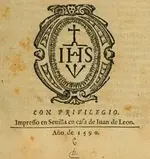Just a footnote here, something Bicknell published even before there was a Lost Dutchman mine in the Superstitions in the public eye; it could be complete BS of course but reinforces that you never know what will be found in the Superstitions.
MOUNT SUPERSTITION
QUEER PEAK IN ARIZONA THAT
THE APACHES FIGHT SHY OF.
A Gentleman with a Taste for Roaming Makes an Investigation and Finds a
Natural Electric Battery Rude Smelter of the Prehlstorlc Some twenty odd miles due east from
Phoenix, the capital of Arizona territory, rises abruptly to Superstition mountain,which forms a very prominent landmark, as it can be seen for a long dlstance in any direction. On the summit of Superstition mountain, and at the extreme western edge, overlooking tlie rocky bluffs, 200 and 800 feet in height, are the ruins of an old stone fort, such as are frequently found In Arizona at points where a good view of the surrounding country is afforded. About an acre of land, or rather rock, is within this inclosure. In this connection, and as the name of the mountain would indicate, is an Indian legend, and the place is held, even at tho present time, In a degree of veneration and awe by the tribes of that section of Arizona so great as to prevent any of their members hunting on or visiting it.
In the fall of 1883 P. C. Bicknell, who still resides in Phoenix, and who is a thoroughly educated gentleman, with a taste for roaming through the mountains and a penchant for archaeological research, paid a visit to a friend a cattle man residing on the Salt
river for the purpose of enjoying a brief period of recreation in hunting, fishing and the pursuit of his studies in nature. It occurred to him one day to visit the summit of Superstition mountain, which, although four or live miles distant, could easily be accomplished
before night. Taking his rifle and a canteen of water, Mr. Bicknell set out, and after a long walk and a laborious climb reached his objective point in the afternoon.
A LIVING LINE OF FIRE.
He saw nothing remarkable within the inclosure of the fallen walls. Some stone axes, hammers and broken pieces of pottery were scattered about, but as they were of the usual patterns found in all Arizona ruins they did not arouse especial interest. In one corner of the old fort, and nearly covered with fallen rock, he encountered a rude furnace, evidently used for the smelting of ores. Anxious to discover the use of what metal the prehistoric inhabitants had knowledge, he set about removing the stones. The work was very tedious and laborious, and, being absorbed with interest, he paid no attention to the flight of time. Finally he was rewarded by securing a piece of slag and also a specimen of ore which had not been subjected to treatment, and was surprised to find that the mineral was copper. Having settled this matter to the satisfaction of his own mind, Mr. Bicknell arose and cast a look to tho west, to discover that the sun was then sinking behind the range of distant mountains.
This did not disturb him much, however, so he built a fire, roasted a rabbit which he had killed on his way up, and made such preparations as were possible to spend the night comfortably on the mountain. After sundown the atmosphere became quite sultry, and, as there was every indication of a thunder storm, Mr. Bicknell concluded that he would not remain within the walls of the old fort, as the rain was liable to drive from the loose rocks rattlesnakes, centipedes and poisonous insects of various kinds. Therefore he selected for his sleeping place a remarkably smooth rock, about twenty yards in front of the east wall. Putting his hobnail shoes under his head for a pillow, Mr. Bicknell, somewhat exhausted from his long stroll and excitement, soon fell into a deep sleep.
Some time afterward he was suddenly awakened by a sharp electric shock which seemed to pass from the back of his neck downward. Managing to scramble to his feet he ran some distance to the east, and, looking back to his sleeping place, was surprised to see a living line of fire or lightning running across the mountain from north to south. Never having seen "ground lightning" before, Mr. Bicknell was very naturally awe stricken and astounded, but he was more than surprised when, recovering from his bewilderment, he noticed that the electric storm had not passed over tho mountain, but was as distant, apparently, as when he first lay down. The phenomenon lasted but a few moments, but its duration was sufficient for the explorer.
Upon returning to the camp next morning Mr. Bicknell related his experience, which was received with evident incredulity. However, he induced one of the men to accompany him to the mountain a few days afterward. They reached the summit about noon, and the weather was very warm. The men were standing upon the smooth spot which Bicknell had selected for a couch, and he was explaining about his shock, when, with simultaneous impulse, they both sprang forward and gazed into each other's faces in mute interrogation. Subsequent explanation showed that each had experienced a well defined electric shock, as , though by a light current from a galvanic battery.
Mr. Bicknell at once concluded that he would solve the mystery, and set about doing so, although his companion wus most anxious to leave the dread spot. The investigations then begun, and subsequently completed, led to the following discoveries:
On the north side of the precipice was a large dyke of pyritous iron, running east and west, and on its south wall the mineral appeared in the form of protosulphates, or what is commonly known as copperas. In the latter there was a small, irregularly shaped hole several feet in depth, into which water was slowly sipping from a small spring on a slight eminence some yards distant. This water was strongly impregnated with salt. From this pot hole and extending across the mountain top were a number of small veins, or stringers, of copper ore, almost pure in their native state, which terminated, to all appearances, in a heavy ledge of calcspar, bearing galena and a small percentage of gold, running parallel with the copper lead, but on the opposite brink of the bluff. The copper stringers connecting the ledges were evidently what is known in prospectors' parlance as a "blow out," and rested on malpais a kind of glassy slag produced by volcanic heat. Here was a positive and a negative pole, connected with a good electric conductor, and a chemical decomposition taking place that would produce a strong battery. With a jar of the copper stringers, produced by atmosphoric electrical disturbances or a number of persons stopping upon them, why might not a current be induced sufficiently strong as to become destructive to Animal life? But simply the facts are given, and the scientific reader is at liberty to evolve his own theories.
<<from the Evening Bulletin, Jan 15th 1890>>



















